Acid reflux is a condition that occurs when the stomach acid rises up into the oesophagus because of a faulty lower oesophageal sphincter, a muscular ring. The oesophagus is the tube that serves as passageway of food from the pharynx, located at the back of the throat, to the stomach. Acid reflux is fairly common and is usually not serious. If symptoms of acid reflux occur more than twice a week, it may be a symptom for an underlying medical condition called gastroesophageal reflux disease (GERD).

Acid reflux and heartburn, although almost similar, cannot be interchanged. Heartburn pertains to the warm, painful burning in the throat or in the chest due to acid reflux. Acid reflux is the cause, whereas heartburn is the effect, one of the symptoms of acid reflux, which will be discussed further later.Acid reflux may or may not occur with heartburn.
Risk Factors of Acid Reflux
When a person swallows, the lower oesophageal sphincter relaxes to allow food and liquid to flow down into the stomach and closes again. The lower oesophageal sphincter may relax and weaken causing amounts of stomach acid to flow back up into the oesophagus. Certain factors increase a person’s risk for the stomach acid to regurgitate up into the oesophagus which includes the following:
- Obesity
- Pregnancy
- Certain medications such as, aspirin, ibuprofen, blood pressure drugs and muscle relaxers
- Eating large meals
- Eating before bedtime
- Immediately lying down after a meal
- Certain foods and beverages such as, chocolate, citrus foods and juices, carbonated beverages, alcohol, caffeine, and fried and fatty foods.
- Smoking
Symptoms of Acid Reflux
The following are symptoms of acid reflux:
- Heartburn
- Chest pain that worsens during rest or after eating
- Bitter taste in the mouth or throat
- Sore throat and hoarseness of voice
- Dry cough and wheezing
- Excessive saliva production
- Trouble swallowing
- Nausea and vomiting, which may be bloody
- Bloody stools
- Burping, bloating and hiccups
First Aid Treatment for Acid Reflux
Acid reflux is not a medical emergency and can be effectively treated at home. It does not usually require medical treatment but medical advice should be sought if acid reflux occurs repeatedly. For home treatment, the following are generally recommended to relieve of symptoms.
- Avoid lying down or bending as this may worsen the pain. Wait at least three hours before lying down after finishing a meal.
- Identify the foods and beverages that cause excessive stomach acid production and eliminate this from the diet.
- Eat is smaller portions but more frequently. This will avoid acid build up in the stomach.
- Take over-the-counter (OTC) antacids to neutralize the stomach acid. However, this will not reduce oesophageal inflammation. Follow directions given by the manufacturer.
- Take OTC medications to minimize acid production in the stomach such as, cimetidine, nizatidine, famotidine and ranitidine.
- To block acid production and heal the oesophageal inflammation, OTC proton pump inhibitors may also be taken.
Disclaimer: The information should not be used for medical diagnosis or medical treatment. To learn how to manage digestive problems, such as acid reflux, join in First Aid Courses.
